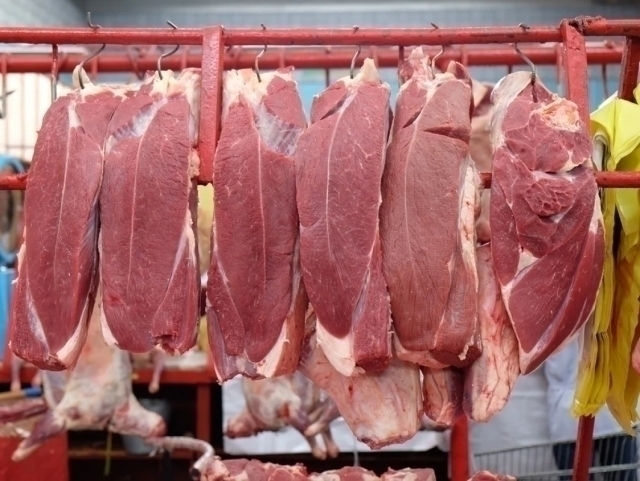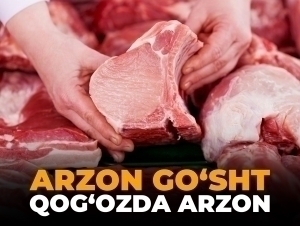Uzbekistan ranks among the countries with the lowest meat prices
Interesting
−
10 May 2025 42447 3 minutes
Uzbekistan ranks among the countries with the lowest meat prices, standing as the second cheapest in Central Asia after Kyrgyzstan, according to the Ministry of Agriculture.
Recent years have seen a steady increase in global meat prices due to several factors identified by the UN Food and Agriculture Organization (FAO). The slowdown in global meat production, rising demand in major importing nations, and higher costs for feed, raw materials, and transportation have all contributed to this trend. For example, chicken meat prices in Russia have risen 9.7% since the beginning of the year, while in Kazakhstan, the increase has been 4.7%. Despite these regional shifts, Uzbekistan’s meat prices remain stable, reflecting relative market resilience to global fluctuations.
In Uzbekistan, meat prices vary based on market type. Discount markets sell 1kg of beef and lamb for 65,000–75,000 UZS, regular retail prices range from 90,000–95,000 UZS, while supermarkets sell meat for 95,000–100,000 UZS. In Tashkent, consumer preferences align with their purchasing power. Around 15–18% of buyers choose the cheaper 65,000–75,000 UZS meat, 82–85% opt for mid-range 90,000–95,000 UZS meat, and only 1–2% purchase premium boneless cuts at 110,000–130,000 UZS. To accommodate different household budgets, meat is also sold in portions such as bones (ragu) for 25,000–30,000 UZS, ribs for 85,000–95,000 UZS, and boneless cuts for 110,000–130,000 UZS.
Globally, 1kg of beef costs $10–12 in Russia, $6–8 in Belarus, $7–11 in Kazakhstan, $8–10 in Tajikistan, $9.5–12 in Georgia, $9.5–12.5 in Azerbaijan, and $12–14 in Turkey. In highly developed economies, Sweden sees prices at $46.2 per kg, Iceland at $38.86, and South Korea at $28. This data confirms Uzbekistan’s position among the countries with the lowest meat prices, ranking second cheapest in Central Asia.
In early 2025, costs related to meat production—including feed, electricity, and fuel—rose sharply. Feed availability dropped to 35–40% of demand due to limited agricultural land for livestock feed production. Comparing October 2024 prices to present, feed costs have surged. Soy meal increased from 3,000 UZS to 7,000 UZS, bran from 2,800 UZS to 4,000 UZS, mixed feed from 2,900 UZS to 3,700 UZS, wheat from 2,200,000 UZS to 3,500,000 UZS per ton, corn silage from 500 UZS to 900–1,000 UZS, hay from 25,000 UZS to 45,000 UZS.
In 2024, Uzbekistan produced 2.9 million tons of live-weight meat, with 1.7 million tons in slaughter weight. The country imported 93,000 tons of meat, comprising 5.4% of total meat supply. Of this, 70% went to processing plants, while the remaining supply was sold in Tashkent’s discount markets. Over the last five years, reforms in livestock farming have doubled the number of cattle and tripled the output of livestock products. The number of breeding farms has increased from 400 to 1,900, and the share of improved cattle breeds rose from 30–35% to 70–75%.
Previously, Kazakhstani sources reported that rising meat prices in Kazakhstan were partly due to Uzbek market demand.
Live
All31 December 2025
Farg'ona davlat texnika universiteti rektori Qo'ng'irotboy Sharipovga yangi o'rinbosar bo'ldi.
30 December 2025
30 December 2025
30 December 2025
29 December 2025





